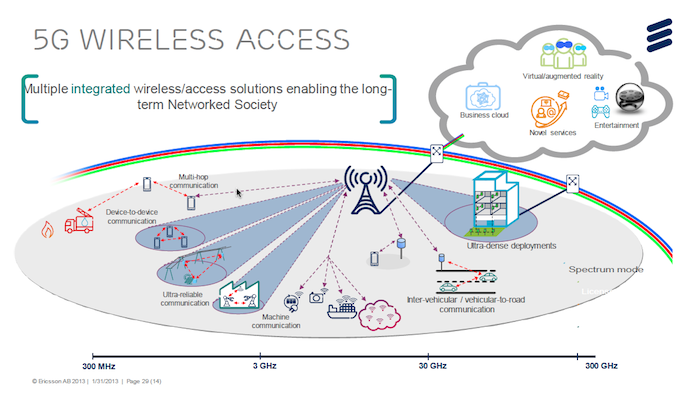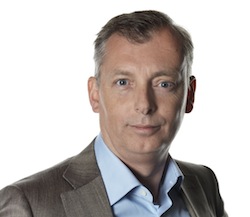As European operators continue to roll out 4G LTE networks, the wider telecoms industry is already thinking ahead about 5G.
Although there are no confirmed standards for this new technology, the European Commission pledged €50 million in February to fund 5G research and people are starting to outline their vision of a 5G future.
Ulf Ewaldsson, CTO of Ericsson, says the vendor has spent the last three years working on its vision of 5G and believes that the industry is missing a trick if it chooses to focus on fast speeds as the key benefit of this next gen technology.
“One of our competitors recently came out and said, ‘We can do 1 GBPS downloading over high frequency radio node’. That’s not that difficult to do. It’s super easy. I think 5G should definitely be capable of at least 10 GBPS and that’s the requirement [we’re working on],” Ewaldsson tells Mobile Europe, following the news that Ericsson is to build three ICT data centres to virtualise its systems.
Read: Samsung develops world first high-speed 5G millimeter wave transceiver
“Some of our competitors are talking about 5G as a new air interface, an ultra-high bandwidth frequency in the radio spectrum, but we think that all the investments in the lower bands, for example LTE, will also evolve with 5G,” he says.
“We want to make 5G the comprehensive standard of all radio access networks (RAN) at once. We don’t believe that you should leave all the old networks behind, so we will continue to work on LTE while we work on the other radio nodes that we have already been working on for years, such as ultra-high radio nodes.”
Ewaldsson warns that the industry needs to remember that research into 5G is also important for backwards compatibility.
“Carrier aggregation, which is helping operators to upgrade their existing 3G networks, came about because of research into LTE. It’s really important not to replace existing technologies but to evolve them together with new wireless technologies,” he says.
Ericsson is working on multiple integrated wireless solutions for the 5G “networked society” of the future, particularly Network-Assisted Direct Mode.

Ericsson’s 5G Wireless Access Networked Society vision
Network-Assisted Direct Mode refers to using the macro network and all available wireless technologies including GSM, HSPA, LTE and Wi-Fi, integrated together to assist a “direct mode”. Ewaldsson explains that a direct mode could be Wi-Fi, for example, where there’s a direct connection from the device to the router or small cell, but if you add in macro coverage on top, the communication channel is a lot more reliable.
“We are now supplying LTE for public safety / emergency purposes. One issue we’ve encountered is that when fire fighters run into a burning building, they can run out of LTE coverage. Our partner Motorola is now working on having cameras in the firemen’s helmets, with remote control centres where they can follow all the fire fighters when they’re inside a building, and then experts can talk to the firemen and guide them as they’re fighting the fire,” he explains.
“With a Network-Assisted connection, the moment you get macro coverage, it will switch over to the macro and will assist during an emergency situation so that it always finds the best connection.”
Another use for network assistance would be to combine the data rates achieved in a group of smartphones nearby the user with the macrocell coverage, to achieve even higher speeds.
Car manufacturers are also very keen to bring out remote-controlled cars, which network assistance would be very useful for.
“It would not be safe to use LTE for this right now. You can’t afford to lose control for even one second, so you would need to have at least three or four transmitters that could take over running the car. If you ran out of connecting transmitters, you would need an alarm to stop the car or take control and drive it manually. Freeways would also need different LTE coverage to what they have today,” he says.
“Hollywood movies are a good example [of the networked society], when you see the technology in the movies, it feels like it’s almost real. Yet today, you can be on a bus in London trying to surf the web and you can’t even get a connection.”
But it’s not just the networks that need to be upgraded, says Ewaldsson.
“An aeroplane maker came to us and said that they want to collect data from the aeroplane from the moment it lands. This means putting a mobile device into the engine to collect data. This is something we’re still working on as there are many issues to solve – different requirements on coverage; roaming fees – would the company have to pay roaming charges on all of its aeroplane engines?” he asks.
“The business models of the operators would need to change, to charge for data instead of voice.”



